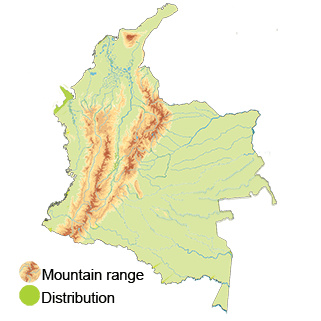Short-billed Pigeon
The Short-billed Pigeon (Patagioenas nigrirostris). Read in Spanish
Appearance: The Short-billed Pigeon is a medium-sized pigeon with a distinctive appearance, characterized by a dark gray plumage and a short, black bill. It has a relatively short tail, dark eyes, and a lighter gray or whitish undertail coverts. Both male and female Short-billed Pigeons share similar plumage characteristics.
Habitat: The Short-billed Pigeon typically inhabits tropical and subtropical lowland forests, including primary and secondary forests, as well as forest edges. This species can be found in various forested habitats, from the Amazon rainforest to the Pacific lowlands and other suitable forested regions within the country.
Behavior: Short-billed Pigeons are often shy and elusive birds that forage in the canopy and mid-levels of the forest. They primarily feed on fruits, seeds, and possibly insects, utilizing their stout bills to extract food from a variety of plant sources. These pigeons are generally observed in pairs or small groups, moving quietly through the forest in search of food and suitable nesting sites.
Breeding: Breeding behavior of the Short-billed Pigeon likely involves establishing territories, courtship displays, and nest-building activities within their forest habitat. They construct simple nests made of twigs, leaves, and other plant materials in trees or shrubs, where they lay one or two eggs per clutch. Both parents are likely involved in incubating the eggs and raising the young until they fledge.
Conservation Status: The conservation status of the Short-billed Pigeon in Colombia is of concern due to habitat loss and fragmentation resulting from deforestation, agricultural expansion, and other human activities.
Distribution
The Short-billed Pigeon (Patagioenas nigrirostris) may be found in protected areas, nature reserves, and national parks within these regions, where the species can find suitable food sources and nesting sites.
Taxonomy
The Short-billed Pigeon (Patagioenas nigrirostris)
- Kingdom: Animalia
- Phylum: Chordata
- Class: Aves (Birds)
- Order: Columbiformes
- Family: Columbidae
- Genus: Patagioenas
- Species: Patagioenas nigrirostris
Vocalization
The vocalizations of the Short-billed Pigeon (Patagioenas nigrirostris) This pigeons in general are known for their characteristic cooing sounds and soft calls.
- Cooing Sounds: Pigeons are known for their soft and repetitive cooing sounds, which are often used for courtship displays and communication with other individuals. The Short-billed Pigeon may have a distinctive cooing pattern that it uses for mate attraction and pair bonding.
- Contact Calls: Pigeons also engage in soft calls for maintaining contact with other members of their group or pair. These calls can be gentle chirps or murmurs that convey proximity and cohesion within the social group.
- Flight Calls: When in flight or during movement within their habitat, pigeons may emit specific flight calls. These calls can help individuals in a group stay in contact with each other and coordinate their movements.
- Alarm Calls: Like many bird species, pigeons have specific vocalizations that signal alarm or distress. These calls are typically louder, sharper, and more urgent than their regular vocalizations, serving to alert others to potential threats.





